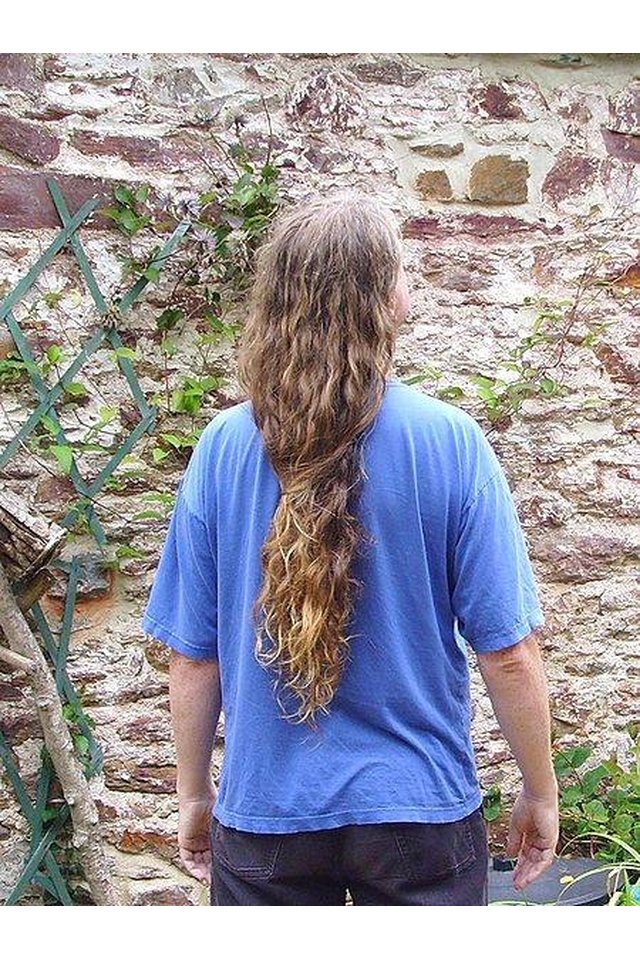Human Hair Vs. Animal Hair

The hairs of humans and animals have similarities, but they are different enough that forensic scientists can distinguish between them. One obvious difference between animal and human hair is the length of the hair. Animal hair stops growing when it reaches a certain length. It then falls out and is replaced by a new hair. Human hair naturally grows much longer and must be cut periodically to maintain a certain length.
Similarities
All mammals have hair, although we often call animal hair fur. Both human and animal hair is made of a protein called keratin and a pigment called melanin that gives the hair its color. Hair grows from a root, and each hair shaft has a cuticle, medulla and cortex. The cuticle is the outermost layer of a hair. This layer is translucent and contains tiny scales. The cortex is the central portion of the hair shaft and is where the pigment that colors the hair is found. The innermost part of the hair is the medulla which is made up of cells that contain air cavities. Cuticle, cortex and medulla are found in both human and animal hair.
Cuticle Scaling
The scales that make up a hair's cuticle are found in different patterns classified as coronal, spinous and flattened. Coronal scales are shaped like crowns and are arranged in a stack along the hair. Coronal scale patterns are found on the hair cuticles of bats and some other rodents but are extremely rare in humans. Spinous scales are found on the hair of cats, seals and mink but never on humans. These scales are triangular in shape and tend to lift away from the hair at their tips. Flattened scales are the kind usually found in human hair, although this pattern is present in some animals. As their name suggests, flattened scales are small, flat scales that are positioned tightly against one another.
Protective Properties
Although human and animal hairs consist of the same three parts, these parts are not the same relative size in all species. Because it must provide protection from cold weather and rain, the hair on many animals has a thicker medulla than human hair. The medulla in human hair is thinner than that of most animals, being less than 1/3 of the width of a strand of hair. The medulla in many animal hairs is larger than 1/3 of the hair's width.
Pigmentation
Melanin is the pigment that gives hair its color. In humans the coloring of a hair is consistent from root to tip. A single strand of animal hair, however, may change colors several times from root to tip. This is a phenomenon known as banding. The melanin in the cortex of a human hair is usually of a consistent density, although the pigment may become a bit more dense as it nears the cuticle, the outermost layer of hair. The melanin in animal hair behaves in the opposite manner, growing more dense as it nears the medulla, the innermost portion of the hair.
DNA
Every part of our body is made up of cells, and all cells contain DNA. Although there are patterns identifying the DNA of different animal species, each individual has a unique DNA pattern. Because of this, the DNA in a hair can be identified and compared with a known sample. The general DNA pattern will tell a forensic researcher what species the hair came from, such as a dog, cat, mouse or human. Once it has been determined what type of animal the hair came from, the specific individual dog, cat or human can be identified by comparison with other DNA of that individual.
References
Writer Bio
Writing professionally since 2008, Michelle Miley specializes in home and garden topics but frequently pens career, style and marketing pieces. Her essays have been used on college entrance exams and she has more than 4,000 publishing credits. She holds an Associate of Applied Science in accounting, having graduated summa cum laude.
